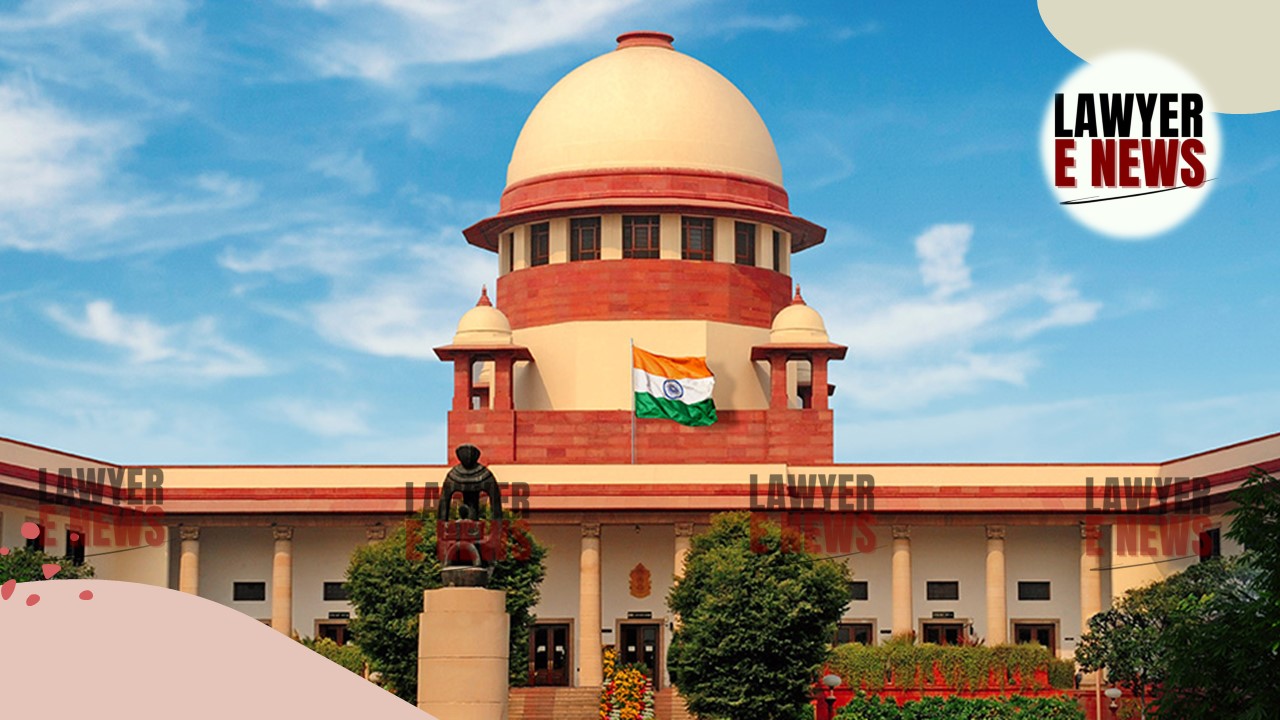-
by Admin
17 December 2025 10:10 AM



“Merely maintaining documents in the record room does not mean they are in custodia legis… Tampering after suit withdrawal is not in relation to a proceeding before the court” – Supreme Court dismissed a criminal appeal challenging the validity of prosecution initiated through an FIR for offences involving forgery and tampering with judicial records. The Court held that Section 195 of the Code of Criminal Procedure, 1973 (CrPC), which bars courts from taking cognizance of certain offences unless based on a formal complaint by a public servant or the court itself, does not apply when alleged tampering occurs after a case has been withdrawn and concluded.
In a significant clarification of the scope of Section 195 CrPC, the Supreme Court held: “Once a proceeding is withdrawn, there would be no proceeding before the Court… tampering with the record which is kept in the record room after the suit is disposed of would not fall within the purview of the provisions of section 195 of the Code.”
The case arose from a civil suit filed in 2003 by the appellant, acting as the power of attorney holder for a partnership firm, for recovery of money. The suit was withdrawn unconditionally after an out-of-court settlement on 2 April 2003. According to the First Information Report (FIR) filed in 2005 by the then In-charge Registrar of the District Court, Bharuch, the appellant later conspired with court officials to forge court records, fabricate a decree, and falsely initiate execution proceedings to recover the settled amount.
The FIR alleged that the appellant filed a withdrawal application (pursis) and then substituted it with a fabricated ‘settlement pursis’ and a bogus decree. Forged documents were allegedly used to file an execution petition based on a non-existent judgment. When the defendant learned of this through the court bailiff, it triggered internal inquiries and, ultimately, criminal charges under several sections of the Indian Penal Code, including Sections 193, 196, 204, 406, 420, 467, 468, 471, 120-B, and 114.
The appellant challenged the prosecution, contending that the alleged acts fell squarely within Section 195(1)(b)(i) and (ii) CrPC, and thus required a complaint by the court and not a police FIR. This argument was rejected by the Magistrate, Sessions Court, and the High Court.
The Supreme Court framed the core issue as whether the offences allegedly committed in relation to tampering with judicial records after the civil suit was withdrawn were protected by the bar under Section 195 CrPC.
Rejecting the appellant’s argument, the Court observed: “All the subsequent acts, that is, preparation of bogus documents and replacing these bogus documents to the court record were the acts post conclusion of the proceedings.”
The Court underlined that the civil suit had concluded with an unconditional withdrawal, and therefore, the tampering occurred after the judicial proceeding had ceased to exist: “Once the suit had been withdrawn, there was no proceeding in the Court… by merely maintaining the documents in the record room, it cannot be said that the documents are in custodia legis, as envisaged under Section 195 of the Code.”
The Court distinguished between live judicial proceedings and administrative custody of court records: “The record, thereafter, was lying in the custody of the Deputy Registrar-cum-Record Keeper, District Court, Bharuch. Thus, the record was not in the custody of the court before whom the civil suit was filed.”
The appellant had argued that even concluded proceedings remain judicial in character for the purpose of Section 195. But the Court decisively rejected this:
“Such offence would be a plain and simple offence under the Indian Penal Code of tampering with documents and forging and fabricating documents and not an offence affecting the administration of justice.”
Furthermore, the Court drew strength from its earlier decision in Iqbal Singh Marwah v. Meenakshi Marwah, observing: “For the purpose of falling within the ambit of Chapter XXVI of the Code, the offence committed should be of such type which directly affects the administration of justice… Whereas, once the case is concluded, tampering with the documents would not in any manner affect the administration of justice.”
The Court confirmed that the prosecution under the IPC was validly initiated through a police chargesheet and not barred by Section 195 CrPC. The High Court’s earlier analysis was endorsed in full. In the words of the Supreme Court: “In the factual matrix of the present case, Section 195 CrPC is not at all applicable… the judgment and order passed by the High Court is just and proper.”
Relying also on principles laid down in M.R. Ajayan v. State of Kerala & Ors. (2024 INSC 881), the Court held: “The offence should be such which has a direct bearing on the discharge of lawful duties of a public servant or has a direct correlation with the proceedings in a Court of justice, affecting the administration of justice.”
And significantly: “To attract the bar under Section 195(1)(b), the offence should have been committed when the document was in custodia legis or in the custody of the Court concerned.”
Since the records were not in court custody and the proceedings had ended, the bar did not apply.
This judgment offers an important clarification on the scope of Section 195 CrPC. The Supreme Court held unequivocally that forgery or tampering with court records after the conclusion of proceedings does not attract the statutory bar under Section 195 CrPC. The offences are prosecutable through standard police procedure and do not require a complaint from the court.
In dismissing the appeal, the Court concluded: “The appeal thus being devoid of any merit is liable to be dismissed. Accordingly, the same is dismissed.”
Date of Decision: May 13, 2025
